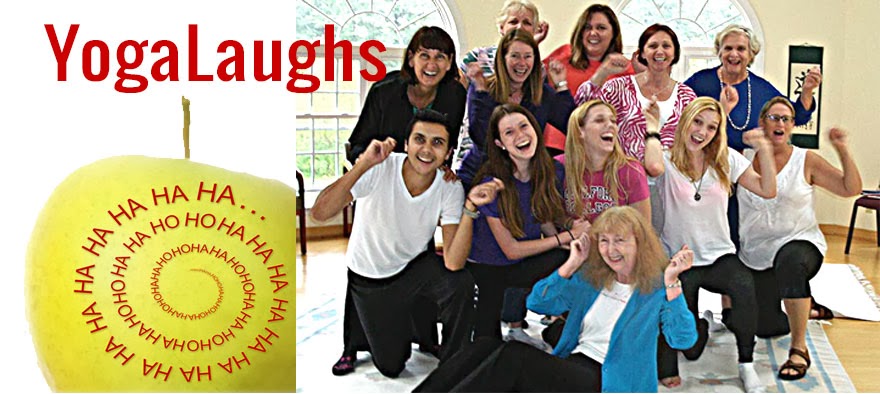Great insight, Leigh. Now, what do we do about it? How do we allow folks who feel uncomfortable to feel more comfortable and safe? Turn it into a guided adventure of sorts?
Every every every group is different but in general, this has worked to help ease participant anxiety. Briefly explain laughter yoga in a nutshell as Dr. Kataria outlines, to honor him. Then, ever so briefly add a benefit it's brought to your life.
Ask people to stand up and begin some kind of pulsed breathing to illustrate how oxygen moves through the diaphragm. Get them somatically involved. They've listened to enough talk. I usually ask people to put their hands on the their diaphragm muscle and begin counting ha-s as a group. One HA. Two, HA HA, three, four, five and soon it gets to be just laughter. Repeat a few times.
Then, dive in to why laughter yoga goes against cultural norms. Air those fears out a little. Perhaps start with explaining how we laugh because something is funny, not the other way around. Ask the group for their ideas. Add to them if needed to validate. Then assure the group they are safe from all of that conditioning and what happens during laughter club stays at laughter club.

Explain a tiny bit about how the body rules the brain during laughter yoga and they'll feel less inhibited within about 10 minutes, so not to worry if they feel a bit odd now. Just do it. It'll be worth it.
I'd also have some kind of informational handout for them to take with them. I'm working on one now called, "How Laughter Yoga is Paleo Exercise". There is a popular one circulating the web - "10 Reasons to Laugh for No Reason". Also a fun thing - comic whatever - that they'll put at their desk or at home to remind them of their experience. Make sure your contact information is on it. :)
This is advice for brand new groups who may be more inhibited. As we lead laughter yoga, which is an art, we learn how to observe and adapt to the needs of each group. And we must also have fun, which everyone will look to imitate once the session begins. Every leader has their own style as well and you should go what you've got!
Anyone else have their own advice? Please add!


